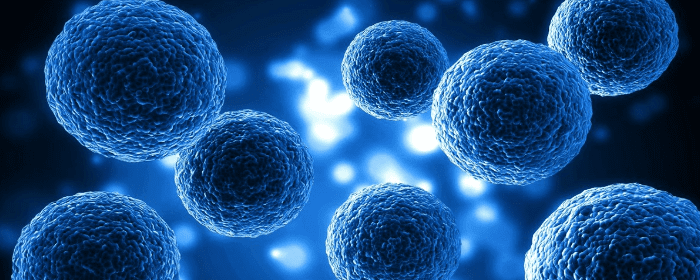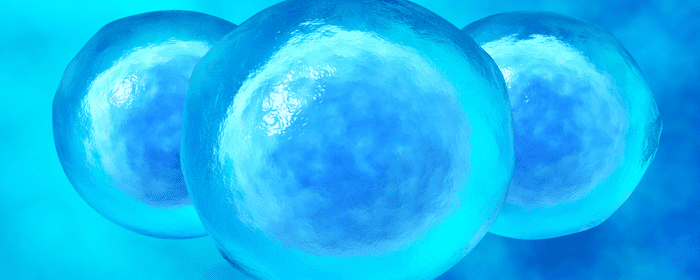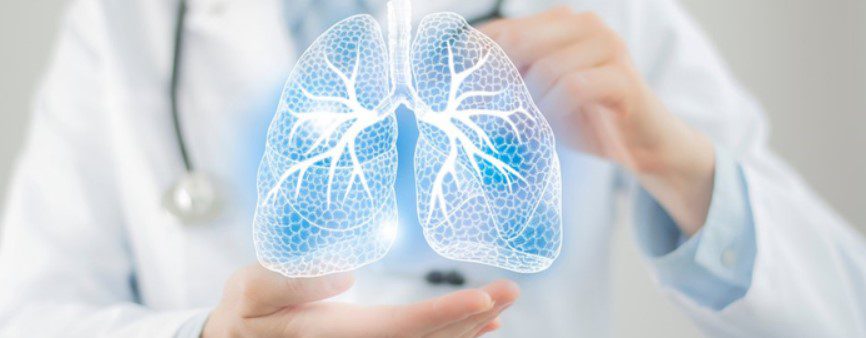
by Stemedix | Feb 26, 2024 | Parkinson's Disease, Health Awareness, Neurodegenerative Diseases, Regenerative Medicine, Stem Cell Research, Stem Cell Therapy
Parkinson’s disease causes nervous system complications. If you know someone who has struggled with this disease, you know how debilitating it can be. Parkinson’s affects mood, memory, cognition, and movement.
Fortunately, science is always advancing, and experts are learning more about Parkinson’s disease. Here are seven ways to help prevent Parkinson’s disease that are backed by scientific research.
1. Do Cardio Regularly
Cardiovascular exercise is linked to many other health benefits, but one of the most notable is reduced risk of Parkinson’s disease. Aerobic exercise, even in mild forms like walking or jogging, boosts your brain health. This improves and protects your memory, concentration, mood, and cognitive abilities as you age.
Cardio has an anti-inflammatory effect on your entire body. This is significant because researchers believe that Parkinson’s is the result of excess inflammation, among other factors. By getting a moderate to high amount of aerobic exercise each week, you can help protect yourself from developing this debilitating disease.
2. Relieve Stress in Healthy Ways
Psychological stress can be just as harmful as physical stress. Between the demands of work, family life, social circles, and hobbies, many modern Americans are more stressed than ever before.
It’s essential to reduce stress to stay healthy throughout your lifetime. Chronic high stress levels can contribute to whole-body inflammation, which is a serious risk factor for Parkinson’s disease.
Stress also reduces the volume of brain matter in areas that control memory, cognition, and movement, which are all negatively affected by Parkinson’s disease. By regularly combating stress, you can protect your brain and reduce your chances of developing this problematic condition.
Some healthy forms of stress relief include:
- Exercise
- Journaling
- Meditation
- Yoga
- Self-care days
- Getting at least eight hours of sleep at night
- Spending time outdoors
- Engaging in hobbies
These activities help you stay well-adjusted and free of stress, which weighs down your mental and physical health over time. Consider making changes in your life that cut out large sources of stress whenever possible.
3. Fill Your Plate with Veggies
Most people know that vegetables are extremely healthy. If you struggle to get your daily servings of veggies in, this information might make you reconsider your habits.
Vegetables naturally contain antioxidants, which are anti-inflammatory compounds that protect against aging and tissue damage. Filling your plate with vegetables increases your intake of antioxidants, vitamins, and minerals. All of these micronutrients contribute to better brain health and anti-aging.
When it comes to Parkinson’s prevention, this is one of the most effective steps you can take. If taste is an issue, consider adding more flavors to your meals to offset the taste of vegetables. You can also add seasoning and heart-healthy oils to make vegetables taste better.
4. Avoid Pesticides and Other Harsh Chemicals
Modern agriculture has changed a lot as humanity has progressed past the hunter-gatherer days. This means that crop growers are using more chemical pesticides than ever before. The long-term effects of these chemicals on human health are overwhelmingly negative.
Some studies have linked higher rates of Parkinson’s disease with high exposure to pesticides in farmers. The harsh chemicals used in large-scale agriculture are designed to keep bugs away from crops, but they can harm your brain health in the process.
To avoid this problem, shop organic and local whenever possible. Be mindful that many organic products can still contain certain pesticides. It’s best to shop at your local farmer’s markets and small grocery stores rather than chains.
These steps will help you access high-quality produce without exposing yourself to harsh, damaging chemicals.
5. Increase Your Vitamin D Intake
Vitamin D is incredibly important for immunity, mood, bone health, and brain health. Research has shown strong connections between Parkinson’s disease and low vitamin D levels. Now more than ever, getting enough vitamin D in your diet is essential.
You get some vitamin D from sunlight. The sun’s rays boost the amount of vitamin D in your bloodstream through chemical changes.
However, too much sun exposure is linked to skin cancer and other serious health problems. You should always wear sunscreen while spending extended amounts of time outdoors, and this can reduce the amount of vitamin D you get from the sun.
You should aim to get most of your vitamin D from your diet and supplements. Healthy sources of animal fat naturally contain lots of vitamin D. Opt for meats and dairy products that have “grass-fed” or “free-range” on the labels. These animals and their products are healthier and richer in vitamin D than factory-farmed animals.
If you struggle to get enough vitamin D in your diet, work with your doctor to find an appropriate supplement. Always consult a medical professional before starting a new medication or supplement.
6. Get Plenty of Sleep
Sleep is the most restorative and reparative process your body undergoes. Without enough sleep, your brain health is sure to suffer. Your memory, cognition, mood, and physical performance all rely on an adequate amount of sleep.
Parkinson’s disease is a neurodegenerative disorder, so it makes sense that chronic lack of sleep can raise your chances of developing it.
Healthy adults should get seven to nine hours of sleep every night. Your sleep needs may be slightly different from the recommended range. It’s important to pay attention to how you feel when you wake up.
If you wake up groggy, tired, and sluggish even after eight hours of sleep, chances are you need more. On the other hand, some people can thrive on seven to eight hours of sleep with no problems.
Sleep will protect your brain health and fight inflammation that can lead to Parkinson’s disease. Make getting plenty of shut-eye a strong priority in your life — your brain will thank you later.
7. Drink Coffee or Green Tea
Caffeine seems to have a protective effect against developing Parkinson’s disease. It’s important to get high-quality sources of caffeine. Otherwise, you may notice sleep disturbances and cardiovascular side effects. Avoid sugary, caffeinated beverages like energy drinks and soda.
Green tea and coffee both have antioxidants, which reduce inflammation and promote better brain health. You don’t have to give up your daily fix to fight Parkinson’s — in fact, it may help!
Know the Facts About Parkinson’s Disease
Stay updated on the latest information about Parkinson’s disease to reduce your risk of developing it. If you or a loved one are already struggling with Parkinson’s, therapeutic treatments like stem cell therapy may help. Ultimately, knowledge is power when it comes to fighting neurodegenerative diseases.

by admin | Feb 22, 2024 | Spinal Cord Injury, Adipose, Mesenchymal Stem Cells, Stem Cell Research, Stem Cell Therapy
With more than 17,000 people in the US sustaining a spinal cord injury (SCI) each year and an estimated combined cost to healthcare and the workforce exceeding $40 billion, the condition has significant personal and socioeconomic implications. In addition, SCIs have limited pharmacological treatment options to support the regeneration of nerve damage.
Considering the limited treatment options for this condition, the field of regenerative medicine, and specifically the use of stem cells, has recently drawn interest as a potential therapeutic treatment option for paralysis resulting from SCIs.
In this report, Bydon et al. summarize findings of the ongoing multidisciplinary phase 1 clinical trial exploring the safety and efficacy of intrathecal autologous adipose tissue-derived (AD) mesenchymal stem cells (MSCs) in patients with blunt, traumatic SCI.
Specifically, as part of this report, the authors describe the outcome of the first patient with C3-4 SCI treated with AD-MSCs. At the time of SCI, neurologic examination revealed complete loss of motor and sensory function below the level of injury; an injury diagnosed as an American Spinal Injury Association (ASIA) grade A SCI.
After undergoing initial treatment, including C2-6 posterior cervical decompression and fusion, improvement in motor and sensory function was demonstrable. However, neurological gains plateaued 6 months after sustaining injury.
Upon enrollment into the CELLTOP clinical trial 9 months after injury, the patient’s neurologic status was found to be ASIA grade C and imaging revealed bilateral myelomalacia at the C3 level and at the C2-6 decompression and fusion. Additionally, an open biopsy of adipose tissue found in the abdominal wall was performed 8 weeks prior to receiving an initial intrathecal injection.
After receiving an intrathecal injection of 100 million autologous AD-MSCs 11 months after injury, the patient was observed for clinical signs of efficacy at 3, 6, 12, and 18 months following injection.
Bydon et al. observed progressive improvement in upper extremity motor scores and considerable improvement in lower extremity scores at 18 months following injection. The patient also demonstrated consistent improvement in ASIA sensory score, including improvements in pinprick and light touch scores at follow-up after 18 months. The authors reported patient improvements in Capabilities of Upper Extremity score, quality of life (as measured by Global Health Score), and in physical and occupational therapy measures. Other than a moderate headache on day 2, no other safety issues or adverse events were reported.
While further clinical trial is required, the authors conclude that intrathecal AD-MSC administration may be a relatively noninvasive and safe therapeutic option for patients with SCI to improve their neurologic status after reaching a ceiling effect in terms of spontaneous recovery.
Source: “First Report From a Phase 1 Trial of Autologous Adipose Tissue ….” 27 Nov. 2019, https://www.mayoclinicproceedings.org/article/S0025-6196(19)30871-7/fulltext.

by admin | Feb 22, 2024 | ALS, Stem Cell Research, Stem Cell Therapy
Amyotrophic lateral sclerosis (ALS) is a progressive neurodegenerative disease characterized by loss of upper and lower motor neurons resulting in paralysis, respiratory insufficiency, difficulties speaking and swallowing, stiffness and spasticity, and muscle atrophy. Commonly known as Lou Gehrig’s disease, after the baseball player was diagnosed with it, ALS is diagnosed in an estimated 5,000 Americans each year.
Currently, ALS has a median survival time of 4.32 years and no known cure. As part of the effort to develop new therapeutic options to slow the progression of ALS, stem cell (SC) transplantation has shown potential in recent clinical trials.
In this review, Aljabri et al. examine the results of various clinical trials exploring the use of stem cell therapy as a viable therapy for ALS. Specifically, the authors identified six studies determined to have met the established criteria for review.
As part of this research, the authors examined the efficacy of SC transplantation in patients with ALS. Studies examined included a number of routes of administration, including subcutaneous, combined intrathecal and intramuscular, intravenous and intralumbar injections, and intrathecal approach. These studies all demonstrated slower decline or significant improvement as measured on the ALS Functional Rating Scale (ALSFRS-R).
While there appears to be a benefit in this application, the authors of two of the studies did not observe a significant difference in the efficacy between treatment and placebo groups after injections.
Additionally, the authors noted that all three studies using bone marrow mesenchymal stem cells (BM-MSC) demonstrated a significant decrease in the progression of disease burden and an overall slower decline in the ALSFRS-R score. On the other hand, studies that used granulocyte colony-stimulating factor (G-CSF) did not demonstrate a significant benefit.
While these results are promising, the authors point out limitations of the study that make it difficult to identify the long-term effects and long-term benefits associated with SC therapy. These limitations include short follow-up periods of either 6 or 12 months and the loss of patients during follow-up, both of which compromise the ability to determine long-term benefits and effects with fidelity.
Aljabri et al. also highlights many challenges associated with the introduction of SCs into the CNS. Among these challenges include the increased risk of AEs associated with the multiple SC injections required to deliver therapeutic doses and determining the most appropriate route of injection for therapeutic benefits.
The authors conclude that early clinical trials have made great progress in delineating the safety of SC therapy in the treatment of ALS. What remains to be determined is how effective SCs are compared to other forms of therapy. While the current data of SC therapy hold great promise, more properly designed clinical trials are needed to verify their benefit.
Source: Aljabri A, Halawani A, Bin Lajdam G, Labban S, Alshehri S and Felemban R (2021) The Safety and Efficacy of Stem Cell Therapy as an Emerging Therapy for ALS: A Systematic Review of Controlled Clinical Trials. Front. Neurol. 12:783122. doi: 10.3389/fneur.2021.783122

by Stemedix | Feb 19, 2024 | COPD, Pulmonary Fibrosis, Stem Cell Research, Stem Cell Therapy, Studies
Chronic obstructive pulmonary disease affects 16 million adults in the United States, according to the National Heart, Lung, and Blood Institute. COPD refers to two main conditions — chronic bronchitis and emphysema. If you’ve received a COPD diagnosis, it can be tough to know what to expect from the disease as it progresses. For many people, one of the leading questions is whether COPD can be reversed. Learn more about this disease and what kind of treatments offer promising results.
Symptoms of Chronic Obstructive Pulmonary Disease
COPD occurs because of damage to the airways or other parts of the lungs, blocking airflow and making it more difficult to breathe. Both chronic bronchitis and emphysema can lead to the development of COPD.
Chronic bronchitis affects your bronchial tubes, which carry air to and from your lungs. Bronchitis irritates these tubes, leading to the production of mucus that narrows the tube’s opening, making it much harder to breathe.
Usually, hair-like structures called cilia move mucus out of your airways, but the irritation from bronchitis damages the cilia.
Emphysema is a condition that affects the air sacs at the end of the bronchial tubes. These air sacs assist in the transfer of oxygen into your blood and carbon dioxide out. Emphysema destroys the walls of these sacs, making it tough to get a breath.
COPD can cause symptoms that include:
- Shortness of breath
- Chest heaviness or tightness
- Fatigue
- Ongoing cough
- Whistling or wheezing when you breathe
- Cough with mucus
Not everyone who has COPD experiences all of these symptoms.
Causes of COPD
One of the biggest risk factors of COPD is smoking. The majority of people who have COPD smoke or has a history of smoking. If you have a family history of COPD, you are more likely to develop it if you smoke. Smoke irritates the airways, causing inflammation while also damaging the cilia that moves mucus.
If you’ve suffered long-term exposure to other lung irritants, you could also be at risk. Irritants can be chemical fumes, dust, air pollution, smoke from home cooking, and heating fuel. Secondhand smoke can also be a factor.
Your age is also a consideration if you have other risk factors. Most people who have COPD are at least 40.
Infections like tuberculosis and HIV also put you at risk. If you have asthma, you also could experience COPD.
One of the potential genetic causes of COPD is a condition called alpha-1 antitrypsin (AAT) deficiency. If you have this condition, long-term exposure to fumes or smoking can result in lung damage, leading to COPD. AAT deficiency makes it easier to develop the disease earlier in life.
Treatment of COPD: Managing Symptoms
Treating COPD means finding ways of decreasing symptoms. The first thing you have to do is to quit smoking if you’re still engaged in this habit. Continuing to smoke as you deal with COPD will only make the condition worse.
Bronchodilators and steroids are options that can help with symptoms. If you have mild COPD, your doctor may prescribe short-acting bronchodilators that you use only when you experience symptoms. These bronchodilators relax the muscles around the airways.
If you have a more severe case of COPD, you may need to take bronchodilators every day. In some instances, your doctor may prescribe them along with steroids.
Can COPD Be Reversed? For some people, pulmonary rehabilitation is helpful. This option includes exercise training and breathing techniques to help you better manage the symptoms.
Oxygen therapy is another option. You receive supplemental oxygen from tubes that rest in your nose, a face mask, or a tube that goes into your windpipe.
Surgery is generally only done in people with severe COPD that doesn’t respond to other treatment options. There are a few different types of surgeries. Getting a lung transplant is another option, though it is even rarer than surgery.
Slowing the Progression of COPD: Promising Options
Although it’s not yet possible to reverse the conditions, it can be possible to slow down the progression of COPD. The first step is to get an early diagnosis and intervention. If you suspect you have COPD, it’s important to ask your doctor for a spirometry test.
If you have a family history of the condition or have smoked for a long time, it can help to get a test even if you don’t have symptoms.
It can also be helpful to learn both diaphragmatic breathing and pursed-lip breathing. Diaphragmatic breathing stimulates relaxation and increases oxygen saturation while also reducing the amount of air trapped in your lungs. Pursed-lip breathing, on the other hand, offers quick relief for someone experiencing shortness of breath and wheezing.
You will also need to avoid environmental triggers. These triggers can include air pollutants, extreme temperature changes, smoke, and strenuous activities.
Additionally, stem cell therapy offers the chance to slow down the progression of COPD. It uses stem cells to stimulate your body to start healing itself. It could speed up your lungs’ ability to heal themselves.
Stem cell therapy can also be helpful in preventing inflammation by assisting you in producing anti-inflammatory molecules.
One of the best things about stem cell therapy and other regenerative medicine options is that it’s minimally invasive and doesn’t require a long recovery process. You also don’t have to worry about side effects or rejections.
Living With COPD: Choosing the Best Treatment Strategies
Once your lungs suffer the kind of damage COPD causes, reversing the condition is usually not an option. However, this doesn’t mean you can’t improve your symptoms and even dramatically slow down the disease’s progression.
Can COPD be reversed? By turning to the right treatment options and making the necessary lifestyle changes, It’s possible to start seeing positive changes.
Stem cell therapy is an option that offers the chance to help your body heal itself, even if not entirely. A combination of treatments can be the most effective way of dealing with COPD, so make sure to speak with a specialist on your treatment options.

by admin | Feb 15, 2024 | Osteoarthritis, Exosomes, Extracellular Vesicles, Mesenchymal Stem Cells, Stem Cell Research, Stem Cell Therapy
Osteoarthritis (OA) is the most common form of arthritis and is estimated to affect nearly 365 million people worldwide. Characterized as an inflammatory disease, OA slowly progresses over time and results in the gradual loss of the protective cartilage found on the ends of the bones.
While the specific cause of OA has yet to be determined, a growing body of evidence suggests the chondrocyte inflammatory response resulting from elevated levels of pro-inflammatory cytokines is a critical factor in the development and progression of OA.
Recent evidence also suggests that mesenchymal stem cell-derived exomes (MSCs-Exos) exhibit beneficial anti-inflammatory responses in several inflammatory diseases, including OA.
In this study, Wang et al. explore the role of human umbilical cord-derived MSCs-Exos (hUC-MSCs-Exos) in treating the inflammation of chondrocytes and its related mechanisms.
As part of this study, the authors report that supplementing the observed chondrocyte inflammation models with hUC-MSCs-Exos demonstrated the ability to reduce the inflammation of chondrocytes caused by the inflammatory factor IL-1β.
Additionally, activation and polarization of synovial macrophages to M1 phenotypes also contribute to the progression of OS. As part of this study, Wang et al. report that hUC-MSC-Exos demonstrated a protective effect against M1 macrophage-induced chondrocyte damage and cell death.
Wang et al. indicate that the results of this study confirm the anti-inflammatory effects of hUC-MSCs-Exos in the human articular chondrocytes inflammation model. The authors also conclude that hUC-MSCs-Exos may be used as a potential cell-free treatment for chondrocyte inflammation in OA.
Source: Wang S, Jiang W, Lv S, et al. Human umbilical cord mesenchymal stem cells-derived exosomes exert anti-inflammatory effects on osteoarthritis chondrocytes. Aging (Albany NY). 2023;15(18):9544-9560. doi:10.18632/aging.205034

by admin | Feb 8, 2024 | Spinal Cord Injury, Mesenchymal Stem Cells, Stem Cell Research, Stem Cell Therapy
Spinal cord injury is one of the most complicated and serious pathological impairments affecting the central nervous system. Since the human body is unable to regenerate and repair the spinal cord after injury, there is a high likelihood of suffering permanent damage and disability.
Often compounding the issue of SCI, secondary events occurring after the initial injury to the spinal cord significantly reduce cell migration and axonal regrowth and limit repair and regeneration.
Recently, transplantation of mesenchymal stem cells (MSCs) has been shown to promote the repair of injured spinal cord tissues in animal models. However, as Qu and Zhang highlight in this review, there remain many unanswered questions that are essential for improving the effects of this MSC therapy. As such, the authors focus this review on recent information about the behavior and function of MSCs in SCI, the function of biomaterials to direct the behavior of MSCs, and the attempt to emphasize combinational strategies such as tissue engineering for functional improvements of SCI.
There are studies showing that the migratory and homing capacities of MSCs are closely related to their engraftment and regeneration ability. Considering this, the authors highlight the importance of having MSCs migrate and integrate into host spinal cord tissue. Since MSC homing toward injured tissue is not an efficient process, and to ensure a more effective stem cell therapy outcome, it is important that these transplanted cells be introduced in a way that increases the migratory potential of healthy MSCs to the site of injured tissue.
Additionally, while transplanted cells have been identified adjacent to neurons after SCI, the surviving number of grafted and differentiated neurons was too small to be considered to contribute to functional recovery after SCI. However, data suggests that the ability of MSCs to secrete soluble factors or vesicles rather than engrafting and transdifferentiating might serve an important role in SCI repair.
The authors also point to studies that indicate MSC implantation could promote a therapeutic effect and functional recovery in experimental SCI animal models. The authors believe that this is a result of MSCs ability to differentiate into specialized neuronal and glial cell lineages after transplantation. While MSC transplantation has not yet been proven to be an effective and reliable therapy for SCI, additional studies need to be done before the therapy is utilized in clinical applications.
MSCs respond to the local environment in multiple ways and represent the most promising exosomes for neuropathic applications. Qu and Zhang conclude this review by calling for more intensive studies examining the potential benefits of combining MSCs with nerve tissue-engineered scaffolds to direct cell behaviors after SCI, including growth, migration, and differentiation.
Source: “Roles of Mesenchymal Stem Cells in Spinal Cord Injury – Hindawi.” https://www.hindawi.com/journals/sci/2017/5251313/.







 St. Petersburg, Florida
St. Petersburg, Florida
